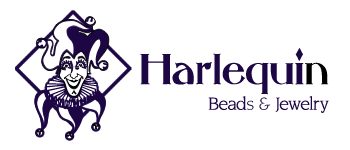Swarovski Crystal Beads
Swarovski History
The Swarovski Company has been making the finest lead glass crystal for over 100 years. It began in 1895 when Daniel Swarovski founded Swarovski Crystal with the assistance of Franz Weis and Armand Kossmann. Daniel worked for long years on a precision faceting machine while he worked for his father as a glass and crystal cutter. He was ready to register a patent in 1895. The combination of fine crystal and precision cutting made the Swarovski name famous. The keys to their success were Daniel’s patented precision crystal cutting machine and the their demand for the very finest quality crystal available.By 1913 the Swarovski Company built their own production plant. It took the years between 1908 and 1913 to perfect the formula for flawless crystal. This was done primarily by Daniel's sons Wilhelm, Friedrich, and Alfred who followed in their father’s footsteps. These crystals were made into flawlessly cut jewelry stones. Their goal was to create the very finest crystal in the world and to meet production demands that were growing every year.These stone caused quite a stir in the fashion world of the 1920s and demand grew worldwide. The “flapper” fashion for fringed and crystal creations brought about another patent. A ribbon of fabric studded with crystals ready to sewn onto any garment. Fashion designers like Chanel and Schaparelli made costume jewelry not just acceptable but a fashion requirement for every fashion conscious woman of the time.Aurora Borealis was the next innovation in the crystal fashion world in 1956. Crystals were coated with an almost imperceptible layer of metal to give the stone a rainbow sparkle. Manfred Swarovski, Daniel's grandson worked with Christian Dior to perfect this process.1977 saw the introduction of a new material and Swarovski branches out to create a new synthetic stone. Cubic Zirconia is the imitation stone that most closely matches a natural stone in sparkle and brilliance. That produced a revolution in the jewelry business and CZ jewelry was all the rage. Anyone could now wear these diamond simulants.In 1995 Swarovski celebrated 100 years of the world’s finest crystal and opened the “Swarovski Kristallwelten” a manmade grotto filled with the most magnificent crystal creations. Designs from the most celebrated artists were created and put on display in a specially designed “Crystal World” in Wattens, Austria.Crystal Tattoos were announced in 1999 and now they could be attached directly on the body, no fabric required. Demand for these gems as well as all the other Swarovski products is growing steadily.
Bibliography
Most of the preceding information was found on the Swarovski website; www.swarovski.comSwarovski: The Magic of Crystal - Text by Vivienne Becker and Principal Photography by John Bigelow Taylor and Published by Harry N. Abrams, Inc. The book is a definitive work about the Swarovski family of companies, their products and philosophy.Swarovski - How Is It Made?
Glass is a combination of sand (silica), soda (a form of salt), and lime (burnt limestone). These common materials, in the presence of very high heat, will melt together forming common glass. When trace amounts of metal oxides are included in the mixture the glass takes on various colors. A little iron oxide (rust) will turn the glass a pale green, manganese oxide produces red, and cobalt in the melt turns the glass blue. Almost any color is possible, depending on the amount and combination of trace elements. Humans have been making glass for thousands of years. In that time they have experimented and found thousands of different types of glass and hundreds of colors. Nearly every artisan glassmaker had her or her own 'secret recipe'. One of those discoveries lead to the introduction of small amounts of lead into the glass. This produced a glass that was exceptionally hard and highly refractive. In other words, it could be faceted like a gemstone and sparkled like a crystal. This was 'lead crystal' and the Swarovski Company has had its own secret recipe for producing the world's finest crystal for over a hundred years. Unlike many other companies, Swarovski manufactures all its own crystal to exacting standards in its own factories. They control every step in the production of everything they make.Not only did the company have a secret recipe, but the founder of the company invented a machine to facet the crystal glass with impeccable accuracy. The Swarovski faceting machines could produce cut crystal with more precision and greater speed than any other company. The result was to make what had once been expensive luxury items affordable to nearly everyone.Cutting crystal is dangerous and time-consuming when done by hand. Swarovski's cutting machine made the job faster and safer for their employees. The health and safety of their employees has always been a prime concern for the Swarovski company, which was not always a common concern for others in the region.There were a great many beadmakers in central Europe, especially in Czechoslovakia and Austria. It was a cottage industry in that region, with families working together to produce beads for sale to companies in local villages and towns. These beadmakers were making beautiful beads but they could not produce large quantities of identical beads. Each bead was made individually hand-made. Color and size would vary by batch. Swarovski could produce large quantities of uniform beads, which was a revolution in the fashion industry. Beaded clothing and accessories could suddenly be seen everywhere, on nearly everyone.The Swarovski company continues to experiment. Now there are many recipes for the wide range of products the company produces. New colors, new shapes, and new finishes are being introduced all the time.








